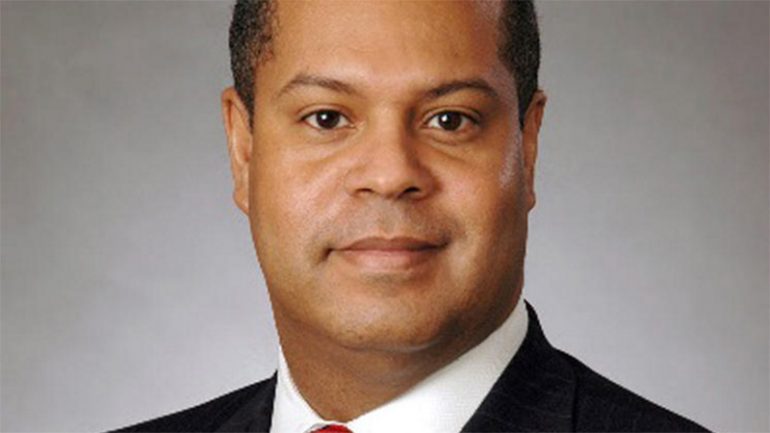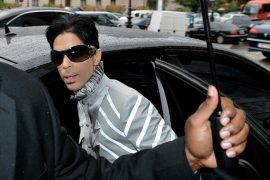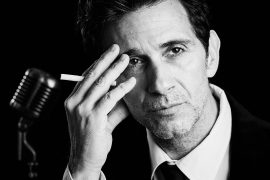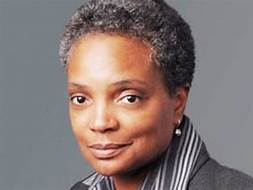In 1965, Black business owners on the South Side of Chicago were frustrated because they couldn’t get money from mainstream banks due to discriminatory lending practices. Neither could the larger Black community, for whatever their financial needs might have been.
So, deciding to “do for self,” a group of Black business people led by Ernest Collins decided to open their own bank, in their own neighborhood.
The group sold shares door to door throughout the community to raise the one million dollars in capital needed to secure a federal bank charter. That was quite a sum in those days, but the group pulled if off and used to money to start Seaway Bank and Trust Company.
It opened for business on January 2, 1965 in a rented storefront at 8555 South Cottage Grove Avenue, but moved into permanent headquarters at 645 East 87th Street, where it remains today, on November 18, 1965.
To support the Black-owned bank, also in 1965, Dr. Martin Luther King Jr. made a deposit at Seaway in the name of his organization, the Southern Christian Leadership Conference.
By the end of its first year, Seaway’s assets were over $5 million. The bank has grown steadily ever since – 50 years later, on its anniversary date of January 2, 2015, Seaway had more than $422 million in assets and approximately 250 employees.
And today, its mission remains the same – to help minority professionals and entrepreneurs obtain the financial assistance they need and to be responsive to the credit needs of the surrounding Black community.
In 1983, the very popular Jacoby Dickens, who owned a number of South Side businesses including the Starlite Lanes bowling alley across the street from Seaway, became the bank’s chairman of the board.
Jacoby administered from that position for 30 years until he passed in 2013 and was succeeded by his wife, Veranda L. Dickens, who became the first female chair of the board. Seaway is now the largest Black-owned and woman-owned bank in the nation.
In 2014, Veranda Dickens and the board brought in South Side native and lifelong banker Darrell B. Jackson to become Seaway’s new President & CEO.
On June 18, Jackson will be inaugurated as chairman of the Illinois Bankers Association, almost a year to the day after he took over the reigns at Seaway. Prior to joining the bank, he was executive vice president and president of the wealth management group for Northern Trust Co.
Jackson spoke with N’DIGO recently about Seaway’s 50th anniversary and the amazing rollercoaster ride that he and the legendary South Side bank have had in the past year.
It’s hard to believe that it’s been 50 years since Seaway was created.
It’s amazing. It didn’t hit me until my family and I went to see Selma. The setting was 1965 and as we were sitting there it dawned on me that that was the year some brave souls decided to go door to door to raise capital to start Seaway Bank.
What are you doing to celebrate the 50th?
We’ve had several different celebrations. Our anniversary was actually January 2 and during that week we had a celebration with some of our oldest customers, some 100 customers that have been with us for the entire 50 years. We’ve celebrated with our long time employees. On Arbor Day, we planted a tree at Chicago State University on behalf of our former chairman, (the late) Jacoby Dickens, outside of the athletic building there that’s named after him.
Are you going to bring back Jacoby’s bowling alley?
I don’t know if that’s in the plans for this year, but he was legendary for that bowling alley. We do have a street naming coming up in June right near the bank in his honor. But we’re not just celebrating the fact that the bank has been around for 50 years, we’re also celebrating that it has played a pivotal role over the years for Black communities.
How did Seaway cope with the recession and where do you stand now?
Well, 2008 was a game changer for the entire banking industry, but moreso for minority depository institutions (MDIs) that have limited capital, access to capital and sources for capital. That already narrows the playing field for African-American institutions, and if you’re just going to rely solely on other African Americans to maintain your status, that’s a challenge in itself.
Including Asian and Hispanic banks, there are only 174 MDIs left in the country out of about 6,500 banks, and only 25 of those are African American.
The communities Black banks serve are typically urban markets, low to moderate in some areas, so every time there’s been a downturn, those communities have suffered to greater degrees than the general population, so there’s a real direct correlation to the banks serving those communities suffering as well.
Also, many of the Black banks had heavy concentrations in commercial real estate loans, as well as faith based church loans, and when the economy goes bad, typically commercial real estate gets hit pretty hard.
With the churches, as the downturn hit, many of the congregations got smaller, the tithes and offerings got smaller and therefore the ability of the churches to repay their loans in some cases became more challenging. And the Black banks literally were the big, big lenders in those areas.
There have been a lot of factors involved in the demise of African-American banks, but basically, as the Black community goes, so go Black banks.
The downturn had an impact on some aspects of our business, but specifically with Seaway, one of the biggest factors that caused us some issues was the fact that in 2010 and 2011, we acquired two different banks. Those banks were failed banks, and the troubles that they had were pretty significant. We struggled for a bit getting our arms around it and where they were not a drag on the bank.
During 2014, our chair of the board, Veranda Dickens, and the board of directors brought in some outside consultants who helped us restructure the bank in a good way.
The good news is that we have rebounded very nicely. We are a very well capitalized bank, with Tier 1 Capital (the core measure of a bank’s financial strength) at 9.36 percent – the FDIC defines a well-capitalized bank as one with Tier 1 capital of 8 percent or better, and we’re well above 8 percent.
We have a strong liquidity position, so much now that we’re looking at ways to utilize and leverage that liquidity in the form of loans. That’s part of our growth right now and the board is really anxious to start to grow and absolutely return to consistent profitability in 2015.
Our focus if really on small businesses and doing more commercial and industrial loans. We’re open for business and we’re out and about in the market trying to raise our presence there. On the retail side, we’re working on new products especially geared toward our traditional customer base and also on the next generation. So we’re looking at our technology, and looking to have a mobile app before the end of the year for the generation that likes to bank by using their phones and pads.
There are a lot of exciting things going on now at Seaway as a result of our improved financial position. We are definitely in growth mode, though we still have work to do. But just last summer, we weren’t talking about growth; we were talking about survival, a very different position than we’re in today.
Why did you jump into a precarious situation like that when you were in a comfortable position at Northern Trust?
It’s the old expression, “To whom much is given, much is required.” I grew up on the South Side in the Morgan Park/Beverly area. As a high school senior, I worked in the mailroom at South Shore Bank and did that while I attended college.
I got a chance to see firsthand how a community bank really impacts the communities it serves. That spurred my passionate love for banking. I spent quite a few years there at South Shore, then went downtown to Harris Bank and went through their commercial banking training program and got a wonderful experience for almost years there as a commercial lender and then a private banker.
I got a call from Northern Trust to come over and help them and was there almost 20 years before I got a call from Veranda Dickens. I knew Jacoby Dickens very well. He was a mentor and a very good friend and we’d meet a couple times a year just to talk about banking and how things were going at Seaway. I always had a great deal of respect for what he and his team were doing here.
So when Veranda called me and asked if I would help her think about how to restructure and re-position the bank, I was happy to do that and during the course of us working together, she asked if I would consider coming onboard.
I’d had a wonderful run and wonderful career and a lot of success at Northern Trust, and I felt like this was a good time for me to get back to my roots of community banking and to do something in my final years of banking that could be really meaningful not only for Seaway, but for the community that we serve. It was about coming home and coming back to my roots.
And it has to be a challenge, too.
It is a challenge and I must admit that in my previous role at Northern, we had built a really good team and were really running on all cylinders. Even during the downturn, the units I ran were very successful and performed well above expectations. For me, that was nice, but to come and replicate that kind of success here would be far more meaningful to me and it’s an opportunity that I couldn’t pass up.
Coming back to your roots, what’s the community like now compared to when you were first here and what does it need?
It’s almost like going back to the future because there are still some of the same issues – access to capital for small businesses; people still trying to experience home ownership; unemployment rates significantly higher than the general population.
I’m encouraged though that the economy is getting better and I think people are getting back to work. People seem to be saving a bit more; we’ve seen some of that here at the bank. I’m encouraged that there are going to be opportunities for us to really have an impact.
We’re doing some things on the community service front like teaching financial literacy whenever we can so that we can do our part to help people be in a better position to become homeowners and to have the opportunity to start a business or to successfully run an existing business.
What are your roots?
Mendel High School, St. Xavier University, and a Master’s from Northwestern. I was on the little league team in Maple Park and Jackie Robinson West used to beat us pretty consistently, but we weren’t the only ones! Grew up on the South Side and worked at Mailings Shoe Store in Roseland.
My dad was a Chicago policeman, highly decorated, and unfortunately killed in the line of duty in 1969. He was only with me for 11 years, but had a great impact on me in terms of his work ethic and devotion to family. I hope I’ve made him proud in that regard.
My mother Carolyn was a rock. When he passed on, she played both roles of mom and dad and made sure that my two younger sisters and I would not only have a good education, but a good home environment. It was a very stable environment and she was always there at home for us. She passed away from cancer in 2002, but was just a phenomenal lady.
Your Dad and the Little Leagues, did that push you toward mentoring?
Absolutely. Personally, I’ve had countless numbers of mentors, too many to even mention but very important in my life, and I feel I have an obligation to do that.
I recently spoke to St. Xavier graduate students about the importance of mentorship and support systems. I’ve mentored a lot of people at Northern and outside of the bank. I’ve worked with the kids at Urban Prep and Englewood, and there are some really dynamic young men over there.
You’re getting ready to head the Illinois Bankers Association.
It’s a real honor. The Illinois Bankers Association represents the majority of the community banks and banks in general around the state, probably some 250 members. I’ve been a member of the board for the last seven years and worked my way up to be chairman, the position I’m about to be installed in on June 18.
It’s an historic event in that I’m the first African-American chairman of the group in its history and it’s a double pleasure being able to fill that role while I’m here as President & CEO of Seaway Bank.






